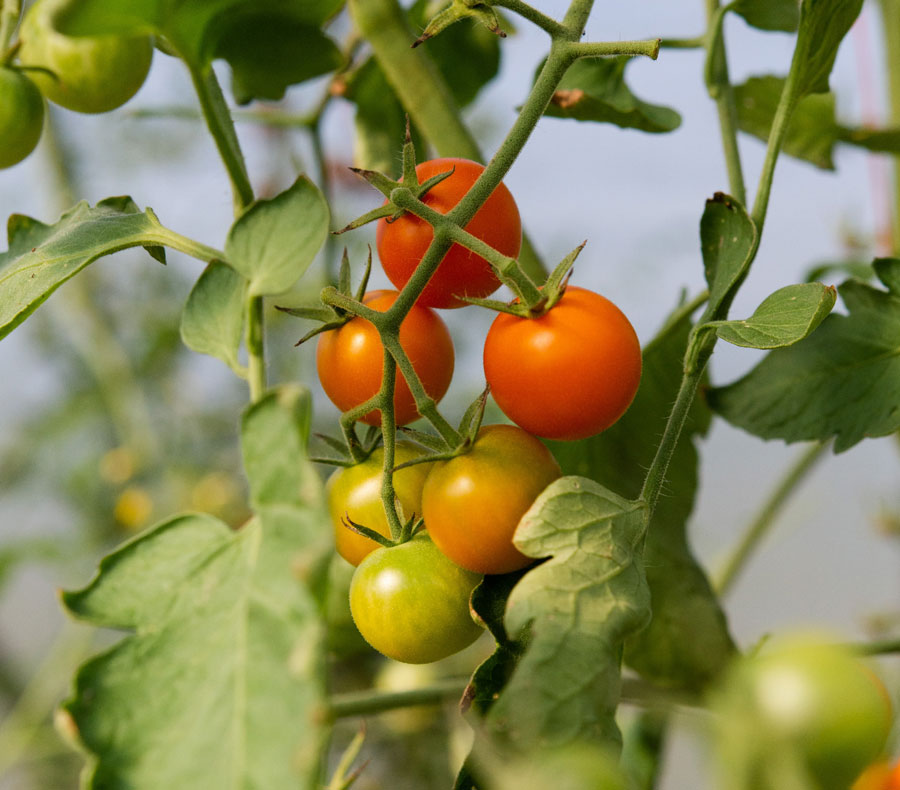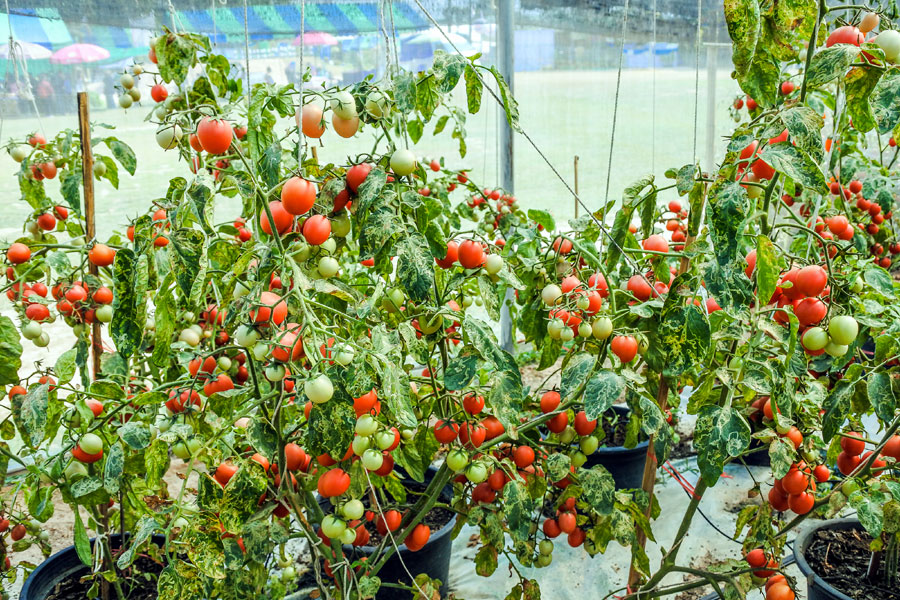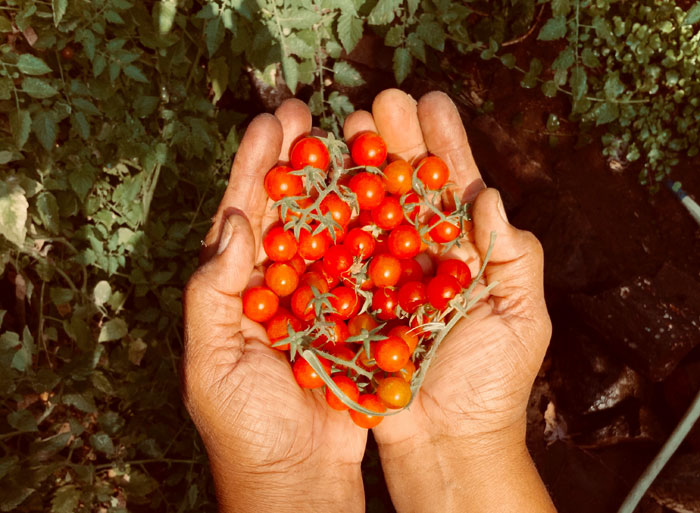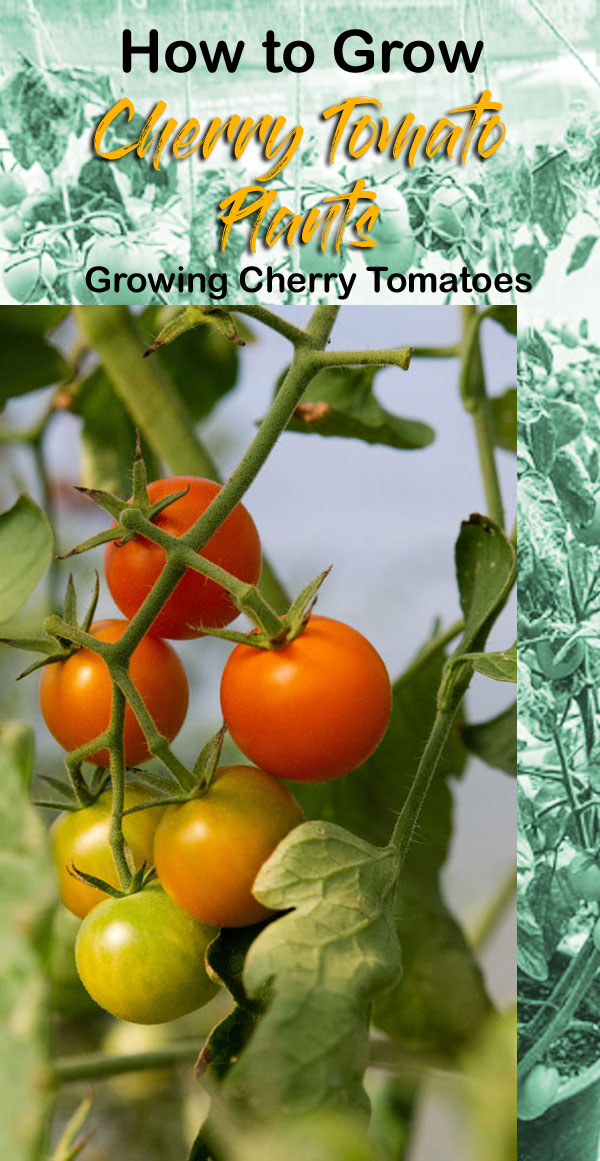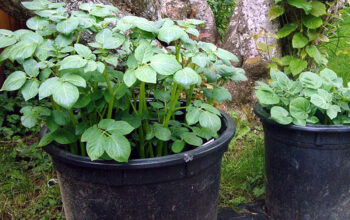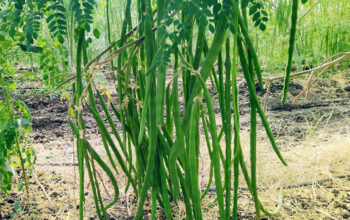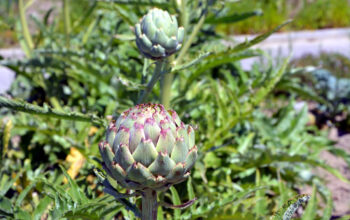Cherry Tomato Plants
Cherry Tomato is well known that tomatoes are a source of umami. There are many ways to consume tomatoes, raw or cooked, in soups, sauces, salads, and drinks. In spite of tomatoes’ classification as berry-like fruits, they are commonly used as a vegetable ingredient or as part of a side dish. If you want to plant small fruits in your kitchen garden, then you can plant fruits like ‘Cherry Tomatoes’ and ‘Lime’. The techniques for planting and caring for cherry tomatoes are the same as for larger tomato plants. There are many varieties of cherry tomatoes available in the market and pesticide use is possible in all varieties. Read How to Grow organic Cherry Tomato Plants, Growing Cherry Tomatoes in this article.
The tomato plant is widely produced in temperate climates throughout the world. Greenhouses allow for tomato production at any time of the year. The plant generally grows between 1 and 3 meters high. The stems of these vines are weak, and they spread and usually need support. While indeterminate tomato plants occur in their native habitat as perennials, they are cultivated as annuals. Each tomato cultivar has a different size, ranging from one to ten centimeters.
Our other popular tomato related posts
- Why Tomatoes are not Ripening, Various ways to ripen tomatoes.
- Growing Heirloom Tomato plant at home.
- 7 Steps to Get Rid of Blossom end rot of Tomatoes.
- 9 Easy tips to Growing Tomato plant.
How to Grow and Care Cherry Tomato Plants
There is no doubt that tomatoes are the most popular vegetable for beginners and experts alike. After the frost threat has passed and temperatures have risen to 55 degrees, tomato planting is ready.
Plant tomato plants deeply, up to their first set of leaves; tomatoes are able to grow roots along their stems. That way, you can get rid of those leggy tomatoes. Plants that are too long and wobbly can be bent into right angles by digging a few small trenches and laying them on their sides. When you bury the stem, leave only the two leaves on top.
Seedlings should be given a lot of room to spread if you grow tomatoes from seed. Cut the smaller, weaker seedlings to make room for the best-growing ones. Their growth is inhibited in crowded conditions, which stresses them and leads to health problems later on. Once a tomato seedling has its first true leaves, it should be transplanted into its own 4-inch pot.
Sunlight
A strong, direct source of light is essential to tomato seedlings. Give an area of sun exposure to your tomato plants. For tomatoes to produce their best flavor, they need at least 6 to 8 hours of sun daily. A tomato plant converts sunlight into energy, making light crucial to its growth. Energy is needed for tomatoes to form fruit. Accordingly, the more sunlight a plant receives, the more energy it has and the more fruit it can produce.
Watering
To make tomatoes grow well, a mature plant needs about 1 gallon of water per day, especially when the sun is shining the brightest. Tomatoes need constant watering to stay healthy. Make sure not to overwater the plant. An overwatered tomato plant may show cracked fruit or blisters around the lower leaves.
When the fruit starts to ripen, you can reduce watering. Losing water will encourage the plant to concentrate its sugars, which will make the food taste better. Don’t deprive the plants of water too much so that they constantly wilt and become stressed, or else the blossoms and fruit will be lost.
Soil
Compost or manure will help your tomato plants grow more efficiently if you dig them deeply. Spring is the best time to amend the soil with composted manure or aged manure. Remember to work in an area of about three feet in diameter and two feet deep, in order to allow roots to grow upwards.
There is almost no soil type where tomatoes will not grow, except for heavy clay soils. The best soil pH for tomatoes is between 6.0 and 6.8. Incorporate several inches of organic compost or aged animal manure into the upper four to eight inches of soil before planting.
Fertilizer
In order to maximize tomato production, fertilize them as soon as they are planted. You can then fertilize them again once the tomatoes set fruit. You should add light fertilizer once every one to two weeks after the tomato plants begin producing fruit until they are killed by frost.
A 5-10-10 formula that includes calcium, magnesium, and trace amounts of sulphur is ideal for fruiting tomatoes.
Temperature and Humidity
Generally, tomatoes grow in warm weather. A temperature range of 21-24°C is ideal for obtaining the best fruit color and quality. The set and development of fruits are negatively impacted by temperatures above 32 degrees Celsius.
High humidity and frost make the plants incapable of surviving. Further, it is recommended to keep relative humidity between 50-70% for tomatoes during their entire growth stages.
Read also:
Growing Picher plants at home. How to grow organic cucumber.
for pin:

